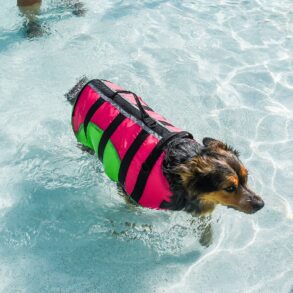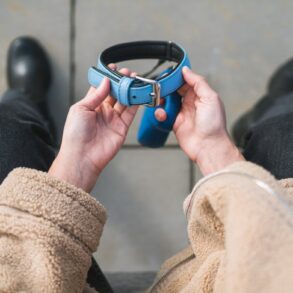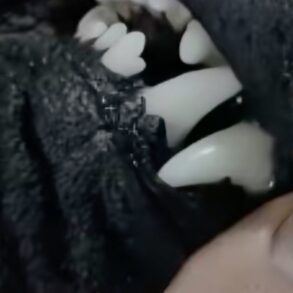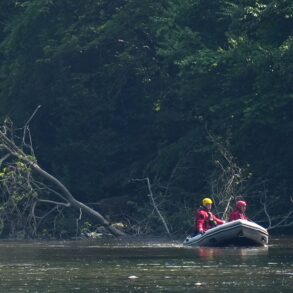Fipronil and imidacloprid were detected at environmentally harmful levels in 100% of samples taken in swimming emissions from dogs across a 28-day period.

Image: CallallooFred / Adobe Stock
Researchers have suggested dogs treated with common spot-on parasiticides should not swim in open water for at least four weeks after application.
A study, published in Veterinary Record, found that fipronil and imidacloprid were detected at environmentally harmful levels in 100% of samples taken in swimming emissions from dogs across a 28-day period – the licensed duration of action for the products.
Current guidelines permit swimming three days after the spot-on application of fipronil and five days after the application of imidacloprid.
Lengthier restriction
The paper called for a lengthier restriction on treated dogs swimming to minimise risk to aquatic ecosystems and for the transition from blanket applications to risk-based, prescription-only treatment, as well as highlighting the need for raising consumer awareness of the issue.
Researchers also suggested there should be more regular reassessment of environmental risks posed by such products and for further studies to be conducted on the impact of alternative ectoparasiticide products, such as systemic isoxazolines.
The study was conducted on swimming emissions from 49 dogs, 25 of which were treated with fipronil and 24 with imidacloprid and moxidectin.
Swimming simulation
The dogs were placed in tanks of water for approximately 5 minutes to simulate swimming after 5, 14, or 28 days following application of the spot-on treatments.
Both parasiticides were detected at hazardous levels in all collected samples throughout the duration of the study, enough to risk aquatic ecosystems and kill water invertebrates.
At five days after application (and two days after dogs are permitted to swim by current guidelines), fipronil had a predicted environmental concentration (PEC) of 213.6ng/L compared with a risk quotient of 17.6ng/L, based on safe thresholds advised by the European Chemicals Agency.
Over the same period, imidacloprid had a PEC of 404.0ng/L compared with a risk quotient of 84.2ng/L.
Although swimming emissions were found to be lower than those occurring “down the drain,” it is said more than three million spot-on treated dogs swim annually in the UK.
A recent study also found that imidacloprid posed the single highest ecological risk out of more than 100 separate compounds detected in analysis of coastal waters in southern England.
Vet and research associate Rosemary Perkins said: “We need to reassess how these products are being used.
“Much of our previous approach was based on the assumption that they pose negligible risk. However, it’s increasingly clear that this isn’t the case.
“We must adopt more responsible and targeted use of pet parasiticides and ensure that pet owners are aware of the potential environmental impacts.”
This post was originally published on this site be sure to check out more of their content.












































